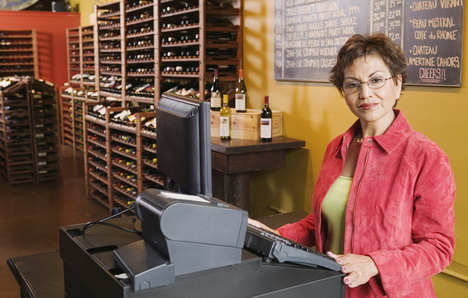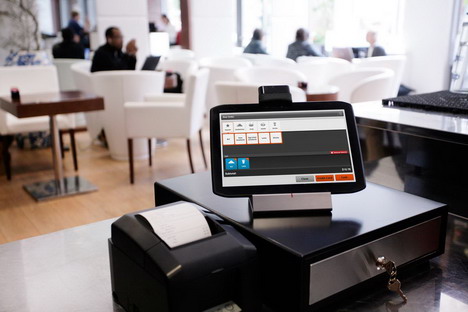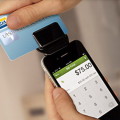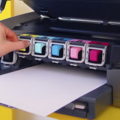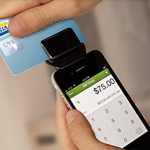Adding a Cash Drawer to a Point of Sale Terminal
Cash drawers are part of the point of sale system. Modular systems usually come with multiple methods of attaching the cash drawer to the system. Some of these are far more effective than others. Companies such as Shopify offer cash drawer solutions for many retail businesses, with a wide variety of choices.
Cash drawer additions can be made by almost anyone once they know what they are doing. Having a specialized IT person is recommended for a company, especially in the case of a point of sale terminal upgrade or fresh installation, but pretty much anyone can make the call for a new unit once they become familiar with the technology.
Many connections can be done manually, but when buying a point of sale system for the purpose of increasing efficiency in the checkout counter, the type of cash drawer you have will directly affect the speed of the transaction processing as well as how well the cashier is able to manage the flow of products across his or her counter. When looking at a cash drawer for a point of sale terminal, there are quite a few choices. Here we look at how each of them can affect the speed and efficiency of the business as a whole.
Receipt Printer Linked Cash Drawer
A receipt printer is one of the additions to a modular point of sale system and one that is quite common in a number of situations. The receipt printer is usually connected to the cash drawer via a cable, either provided with the printer or the drawer. Unfortunately, as is the case for all technology, these cables may go bad from time to time and result in a digital miscommunication and a possible malfunction of either one or both of these peripherals. Luckily the cables are easily replaced since they are relatively easy to get.
The receipt printer is linked to the cash drawer and sends an open command when a receipt is printed in order to receive cash or transaction records in the tray. It is one of the best solutions as far as having a cash drawer linked to a peripheral of the point of sale system goes. However, for some retailers it becomes a nuisance when a receipt is printed and the drawer does not need to be open; while employees can be trained to push it closed again right away, having to wait for the drawer to pop open when another customer needs their help can slow down the pace of customer engagements and assistance in the store. Depending on the amount of non-cash transactions that a business undertakes per day, this sort of setup can either increase or decrease efficiency.
Point of Sale Linked Cash Drawer
A holdover from the old days of the classic mechanical till, the point of sale linked cash drawer is not a very widespread device any more. There are still manufacturers who link their cash drawers to integrated point of sale terminals, but these are usually constructed terminals that do not have independent modular interfaces. The greatest downside of this setup is that if the system malfunctions, the entire system goes offline—even if for the simplest of errors in any of the hundreds of the parts that make up the system. Although it can be very efficient when operating properly, it suffers from the same problems with all its internal workings as the modular cash drawer connected to the receipt printer does with cables.
It is unlikely that a company will purchase one of these if they are looking at a modular, economic and modern approach to a point of sale system, since these systems are clunky, non-portable and tend to cost quite a lot in terms of hardware and software. For a store currently operating with one of these older units, upgrading and updating the old point of sale system to something newer dramatically streamlines the checkout process, increasing transaction speed and decreasing the frequency of technical errors.
Manual Cash Drawer
The manual cash drawer is the least technologically assisted of the three options that most modern businesses have, but these simple units have their strengths. Manual drawers have the major bonus of being able to operate when there is an electricity failure, which is a definite boon if a store is located in an area with a shaky power grid.
Since they usually require the pressing of button to get the cash drawer to open, they can be a security issue for many stores, but in very small towns and old mom and pop shops they’re still rather common. The drawer can be a bottleneck in many cases; the fact that electronically assisted cashing is usually a lot faster than manual cashing makes for the manual cash drawer to be more of a hindrance than a help in many business applications.
The time taken to manually open the drawer takes away from other cashing duties, leading to poor efficiency where a large number of cash is exchanged. However, in the case of where most transactions are digital, it might be a better method of managing money since the drawer does not need to open after every transaction and the cashier can open it when it needs to be opened.
Cash drawers are an important addition to most business point of sale terminals because of the need to manage liquid assets. The terminals via cable connection can provide automatic opening and closing situations for companies that deal with a lot of liquid assets changing hands. In the case of digital transactions, it is more likely that manually controlled cash drawers would be more efficient since the drawer can be opened when it needs to be but closed most of the time otherwise.
As a business addition it can be quite cost effective as well-build cash drawers can live through multiple upgrade cycles easily and be added to new modular point of sale systems via a simple connection. The obvious exception to this would be cash drawers designed into complete point of sale terminals.



